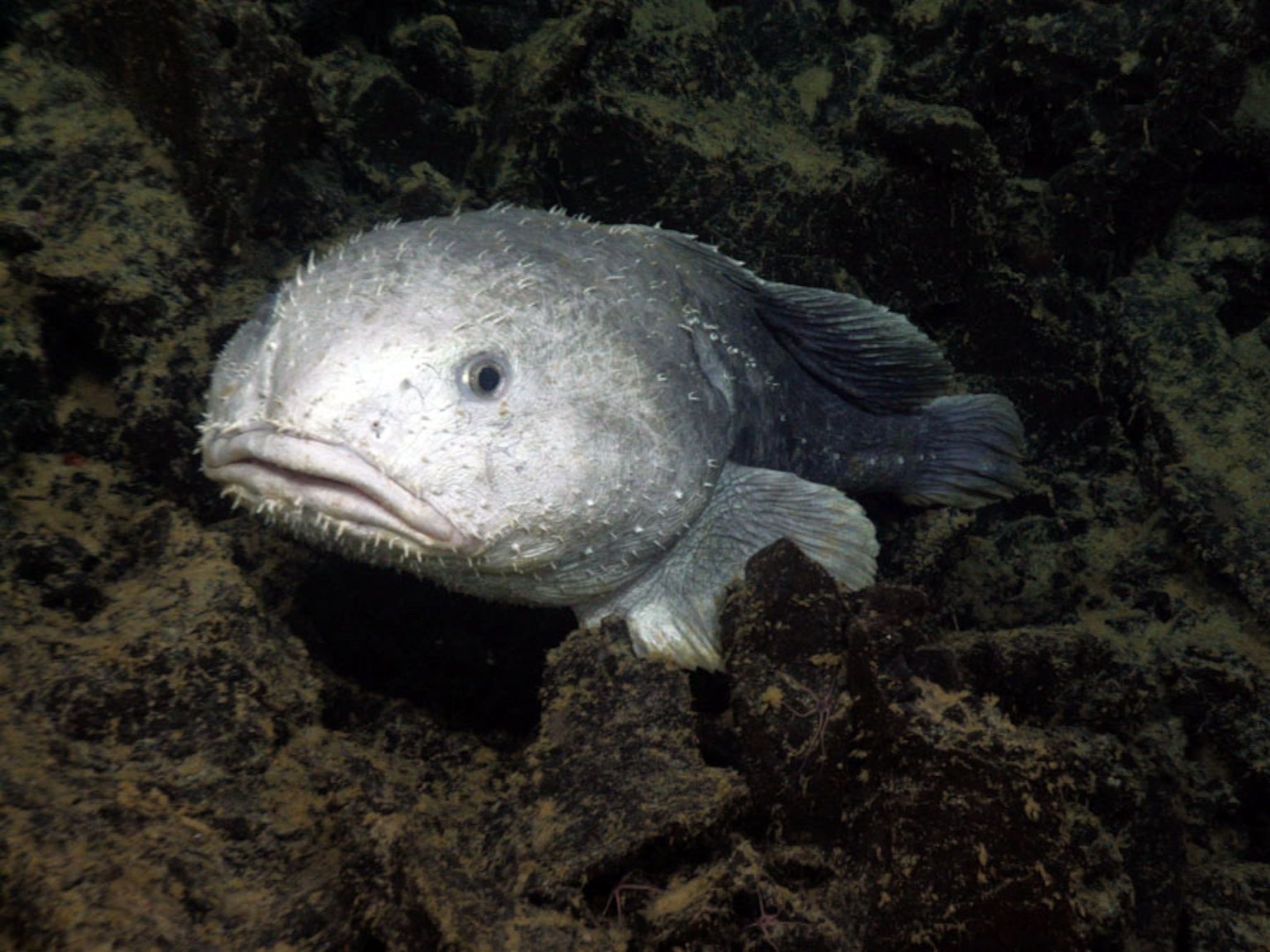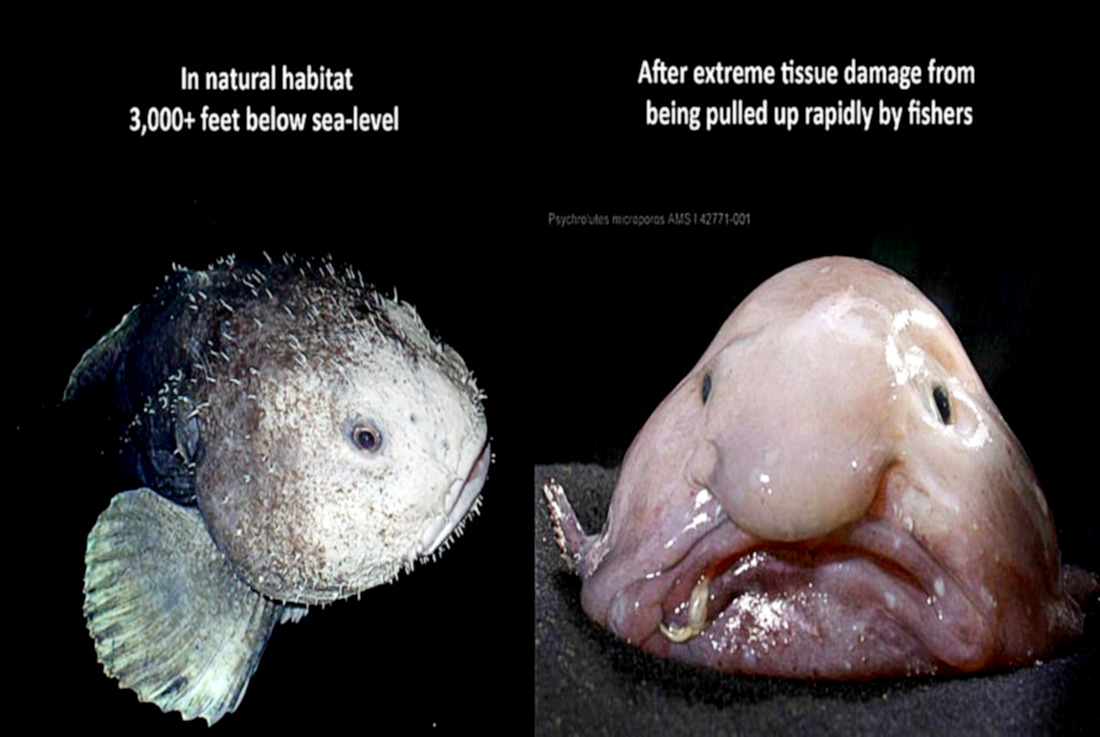Blobfish: The "Ugliest Animal" & Why They Look Different Underwater!
Does a creature's appearance truly dictate its worth? For the blobfish, a denizen of the deep, the answer has been a resounding, yet perhaps unfair, no, as it has been crowned the "world's ugliest animal."
The blobfish (Psychrolutes marcidus), a truly unique inhabitant of the ocean's depths, has garnered a peculiar fame. It's a fame built not on beauty, but on a reputation that has followed it since 2013, when a competition held by the Ugly Animal Preservation Society bestowed upon it the dubious honor of being the worlds ugliest animal. Throughout the waters surrounding Australia, New Zealand, and Tasmania, these gelatinous beings reside, unseen by most, in a world of crushing pressure and perpetual darkness. They typically measure less than 30 cm (12 in) in length, and, in their natural environment, they possess an almost tadpole-like appearance, with large eyes and sizable mouths, a far cry from their more famous, and unflattering, image.
| Common Name | Blobfish |
| Scientific Name | Psychrolutes marcidus |
| Habitat | Deep waters off the coasts of Australia, Tasmania, and New Zealand |
| Depth | 2,000 to 4,000 feet underwater |
| Appearance Underwater | Resembles a typical fish, blending with surroundings |
| Appearance Above Water | Gelatinous, amorphous blob, often pinkish with a droopy "nose" |
| Diet | Marine snow (organic material) and small critters |
| Muscle Structure | Contains muscles, though not in a traditional sense |
| Notable Feature | Adaptation to extreme water pressure |
| Conservation Status | Not currently evaluated |
Australian Museum: Blobfish
- Racha Racha 2022 Watch Stream Explore Your Guide
- Explore Wasmo Somali Telegram Links Latest Updates What You Need To Know
The very environment in which the blobfish thrives is a key element in understanding its appearance. At depths ranging from 2,000 to 4,000 feet below the surface, the pressure is immense, some 120 times greater than what we experience. This intense pressure is what shapes the blobfish, allowing it to maintain its form. In its natural habitat, the blobfish resembles any ordinary fish, blending seamlessly with its surroundings, a far cry from the gelatinous blob it becomes when brought to the surface.
It is this transition, this exposure to vastly different pressure, that transforms the blobfish and perpetuates its image. When removed from the depths, the blobfish's body, primarily composed of a gelatinous substance lighter than water, cannot withstand the change. The fish sustains tissue damage, and its form collapses, taking on that now-iconic, amorphous shape. This is what most people recognize, the pinkish, droopy "nose" and the generally mournful expression that has made it a subject of countless memes and the unfortunate recipient of a somewhat unfair award.
The blobfishs low muscle mass and minimal energy usage further contribute to its unique lifestyle. Its mouth, more suited for gulping than chewing, is designed to consume marine snow and small critters that drift down from the upper layers of the water column. This dietary adaptation highlights how the blobfish, in its own way, has perfectly adapted to its deep-sea existence.
- Bengali Hindi Movie Download Guide 480p 720p 1080p More
- Kim Hye Soo Biography Films Awards Everything You Need To Know
The story of the blobfish isn't just about its unfortunate fame; it's about the beauty of adaptation. The world's most famous blobfish can be found at the Australian Museum. While the blobfish has never been successfully kept in an aquarium setting, one was caught and put on display at the Aquamarine Fukushima aquarium in 2020. It embodies the stark contrast between the underwater world and the world we inhabit, a difference that makes it such a fascinating subject.
The blobfish's existence is also a lesson in perception. Though it went viral because of its appearance, the blobfish only looks that way above water. The fact remains that the blobfish, in its natural environment, blends in with its surroundings, a testament to the incredible diversity and adaptation found within the deep ocean. A recent episode of The Octonauts, a popular childrens cartoon, even featured Bob Blobfish and his brothers, showcasing the creature's presence in popular culture and making the blobfish a recognizable, if somewhat misunderstood, entity.
Despite the blobfish's reputation, the creatures have not been kept alive outside of their natural habitat. Their very body composition means that they would need to be kept at the pressure levels of their habitat. But, the blobfish's story is a reminder that our perceptions can be influenced by the environment in which we observe something. And, in the case of the blobfish, the stark contrast between life underwater and above the surface underscores the wonder and mystery that the ocean continues to hold.
- Alana Cho Porn Hot Videos Exclusive Content Watch Now
- Emily Compagno Her Spouses Love Life Secrets Revealed

What Do Blobfish Look Like Underwater?

Blobfish Facts

Blobfish In Water